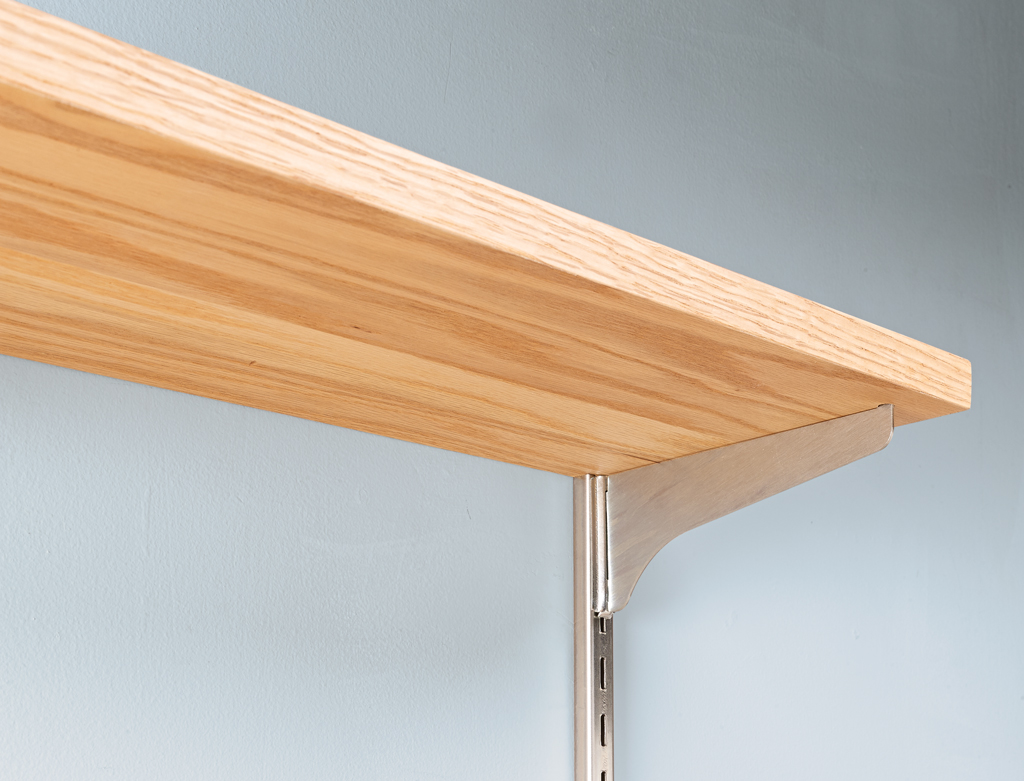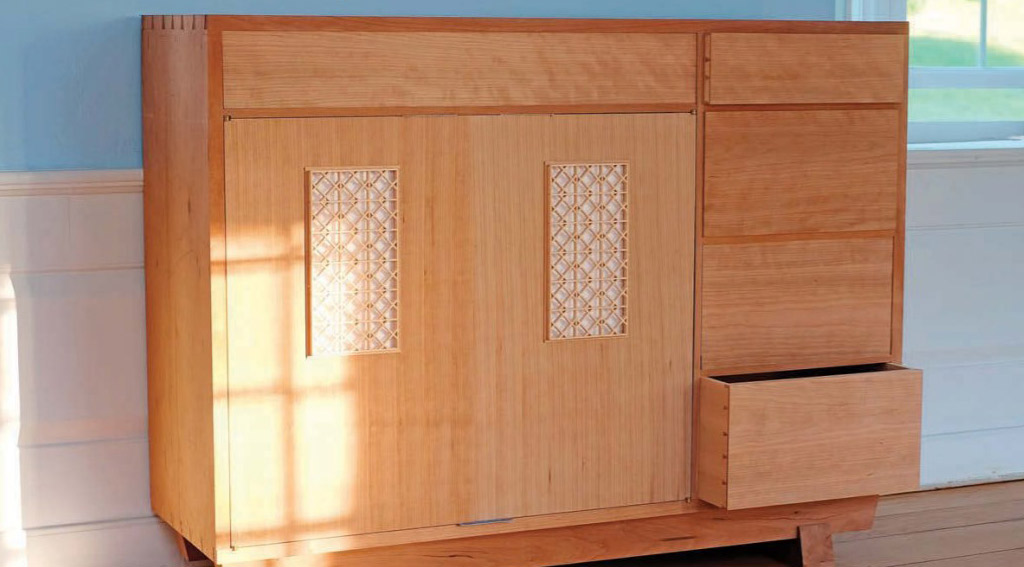
Project Requirements
A specific set of needs drove this small box project: A dorm-living college student needs a place to organize a small set of herbs and spices for cooking in a shared kitchen or travel to nearby campus apartments. Between uses the box will live on a bookshelf, so it should look good, too.
I don't really consider myself a designer. I just enjoy the process of building projects. I feel I have a healthy amount of curiosity, too. Perhaps the best way to describe the projects I build is more of an adaptation or interpretation of an idea or collection of ideas, details, and motifs. Throw in a bit of thriftiness, and there you have it.
This project tumbled around my head (and shop notebook) for more than a year before it came together. The catalyst that ingited the reaction was different box project.


Starting Notes
Mike Pekovich came to film an episode of the Woodsmith Shop. His piece was a small tea chest made in white oak featuring kumiko lid panels. It's lovely. As part of the recording process, he had enough "stunt" parts to build a second example of the chest.
The box parts were simply cut to size, with the exception of the one corner's worth of dovetails, I couldn't bear to see the parts thrown into the scrap bin (burn barrel). The idea came to put myself into Mike's box-making process and see what I would learn from it.

I don't usually do dovetails. However, I followed Mike's technique for table saw-cut tails with hand-cut, router trimmed pins. I joined the lid parts with loose tenons. Mike uses a Domino, I have a Jessem Mortise Mill. But the concept is the same. In the end, I have a sweet box and a better idea of how process and result are related.
In a way, it's like following a recipe to cook something new. Once you know what each ingredient does, it's easier to make changes for a different, yet delicious result.
The Twist
Here's how the tea chest intersects with my spice box. While looking at my version of the tea chest, my daughter suggested that it could be turned on edge and work as a spice box. It's true, the size suits the scale of the common spice containers you find in grocery stores. It's portable and rests on a bookshelf with grace.
My version is made from white pine. Over the past few years, I built a number of projects from softwood. The idea behind this immersion is to learn more about the wood species and to prove to myself that beautiful pieces can come from ordinary and overlooked species. The light weight of pine makes it easily portable.
I traded dovetails for finger joints in the spice box. I made a router jig that allows for custom and variable spacing in the joints. It's frankly one of the best router jigs you can have. The joints fit right from the router and I made them proud in a nod to Mike's "sticky, outy" dovetails.

One of my box-making "rules" is to avoid hardware. So the doors slide on wood runners in grooves in the box top and bottom. The doors themselves incorporate slats that are inspired by a pipe cabinet that James Krenov made. The open design allows the aroma of the pipes to play a role in the user's experience with the cabinet. I like that multi-sensory concept and believe it applies to herbs and spices — even if they are enclosed in canisters.

The shelf inside consists of a slide-in insert similar to the tea chest's trays. I dyed this part green to add a little color to the pale tones of the pine.
I kept the finish light: a coat of shellac with wax on top.
While meant to serve dorm life in the immediate future, I like to think that this box can live on in an apartment or home kitchen. Though filled with culinary seasonings, it would also house memories of another time.











